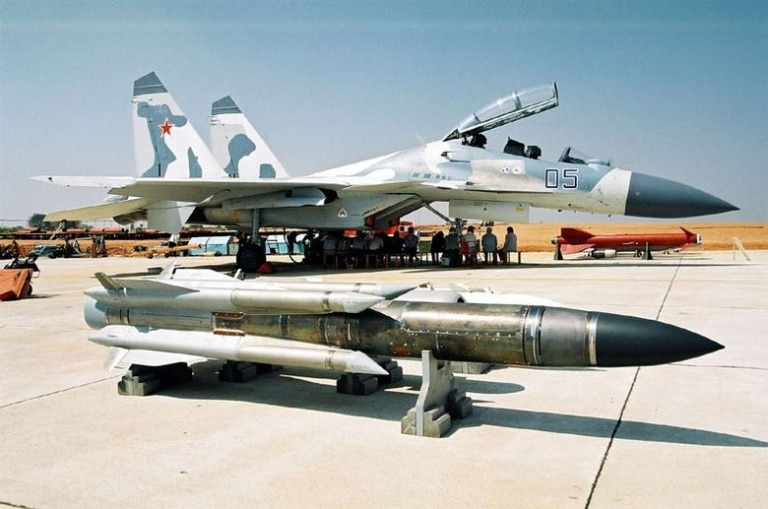Expand
The ARMS
The Kh-31 was not originally developed as an anti-ship missile. It started with the Kh-31P anti-radiation missile. During the 1970s, the Soviet Union put a number of anti-radiation missiles in service: the Kh-22P, the Kh-28, and the Kh-58. While having superior range to Western counterparts, these missiles were also considerably larger and heavier and therefore the selection of launch aircraft was limited. A lighter and more versatile option would enter service in 1978- the Kh-25MP based on the Kh-25M. This missile was considerably lighter and could be carried by a wider variety of aircraft. However, it lacked range and had a primitive and ineffective seeker head.
So in 1977 development began on a new ARM, with the goal of combining the performance of the Kh-58 with the form factor of the Kh-25MP. This would be the Kh-31P, with requirements for a range of at least 60km, a top speed of 750m/s, and a mass of no more than 400kg. In order to provide a high-speed, long-range missile in a compact package, a novel two-stage propulsion system was developed. Upon launch, a solid-fuel rocket would accelerate the missile up to Mach 1.8. Upon booster burnout, a ramjet would provide propulsion for the rest of the missile’s trajectory. This propulsion system had already been used on the much larger P-270 Moskit anti-ship cruise missile. It quickly became clear that developing a small enough ramjet would be infeasible, and project requirements were adjusted, with maximum mass increased to 600kg, maximum range increased to 100km, maximum speed to 1000m/s, and radar band coverage increased. This would mean that the Kh-31 would not be able to completely replace the Kh-25MP as a lightweight ARM, but it would be much more effective against a wider array of NATO SAM systems. First flight of the Kh-31P would occur in 1982 and the missile would officially enter service in 1988.
The Kh-31P was intended to be an intermediate design between the Kh-58 (top) and Kh-25MP (bottom)
In some respects the Kh-31 was a miniaturized P-270 Moskit
The Ship-Killer
Starting in 1978 development began on a second version of the Kh-31, for anti-ship use. Fast, lightweight, long-range, and relatively agile, the Kh-31 would be excellent at destroying screening ships, clearing the way for larger weapons such as the Kh-22 to target enemy carriers.
The Kh-31A required little modification from the Kh-31P, only differing in seeker and warhead. This meant that any aircraft capable of carrying the Kh-31P could also carry the Kh-31A. However, not all launch platforms would be equipped to track sea targets and provide guidance via datalink.
The Kh-31A entered service in 1989.
The Kh-31 is a relatively large missile
Derivative Models
The Kh-31A has been further developed into a few different models. The Kh-31AD features an improved seeker and guidance system as well as a longer fuselage containing more fuel, all to allow for an extended range of 160km. This version first entered service in 2013.
China would purchase the Kh-31P as the KR-1 in 1997. In 2007 they would develop an improved version designated the YJ-91. This was followed shortly by the YJ-91A AShM variant.
Though perhaps the most interesting variant of the Kh-31A is the Zvezda-Boeing MA-31. Yes, Boeing. In the 1990s the US Navy needed a new target missile to replace the MQM-8 Vandal. The new missile would need to simulate USN’s primary threat, the Kh-31A. McDonnell Douglas came up with the bright idea of simply purchasing actual Kh-31As, which were offered for export. Starting in 1996, the US would purchase 47 Kh-31s, sans seeker or warhead. These would then be fitted with a guidance section and instrumentation produced by first McDonnell Douglas and then Boeing when the latter acquired the former. In 1999 the Russian Duma would decide that selling the US missiles so the Americans could develop countermeasures was perhaps not the best idea, and MA-31 production would cease.
The Chinese YJ-91 is based on the Kh-31
An F-4J launches an MA-31
